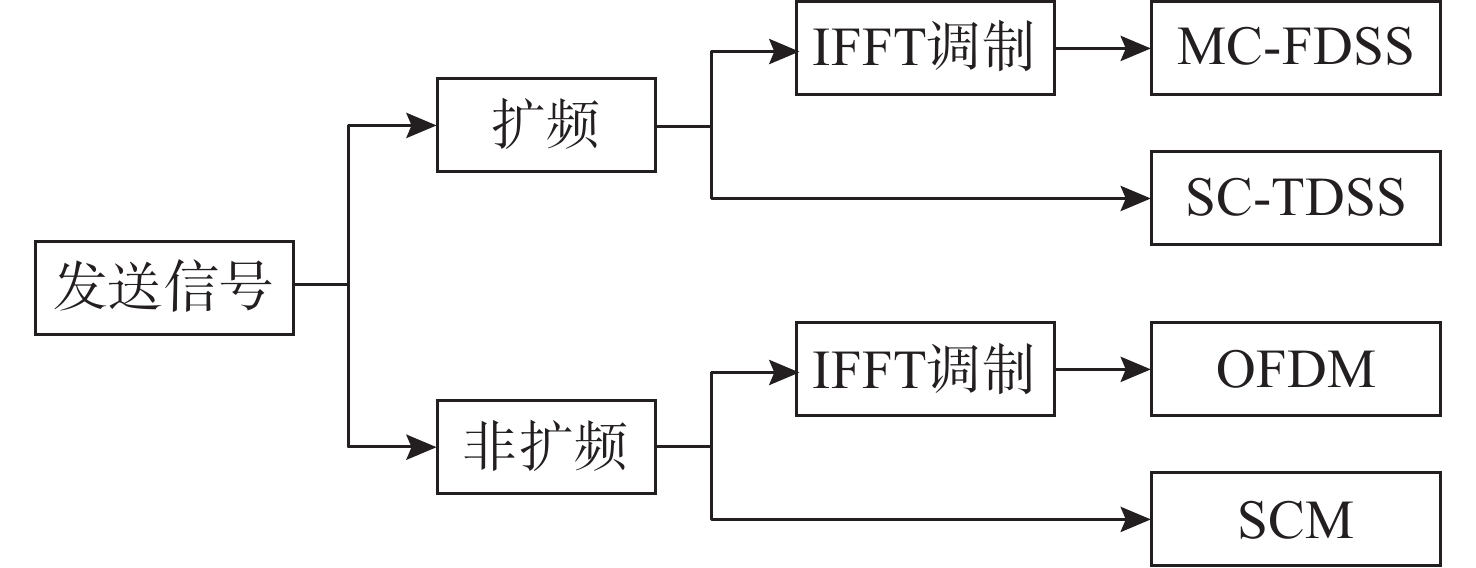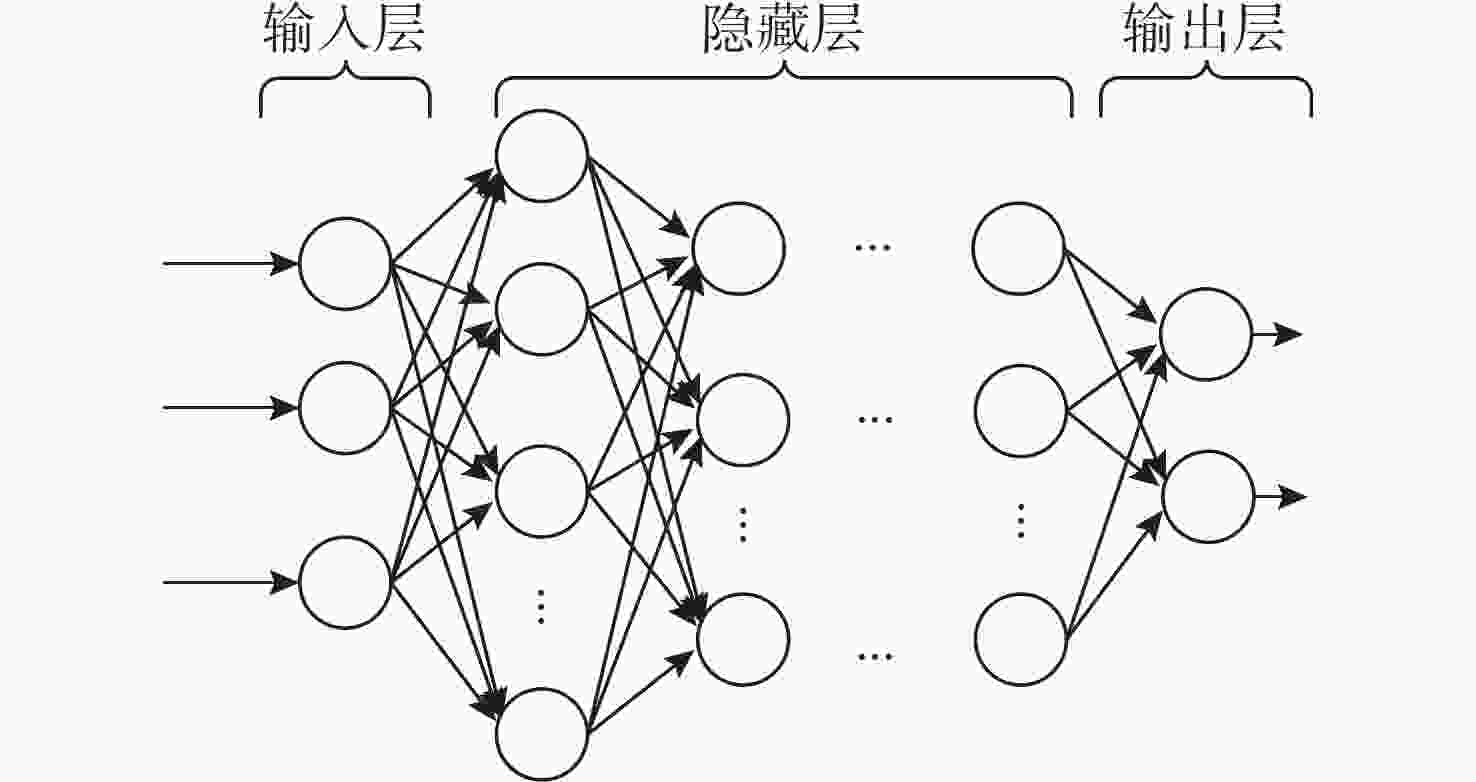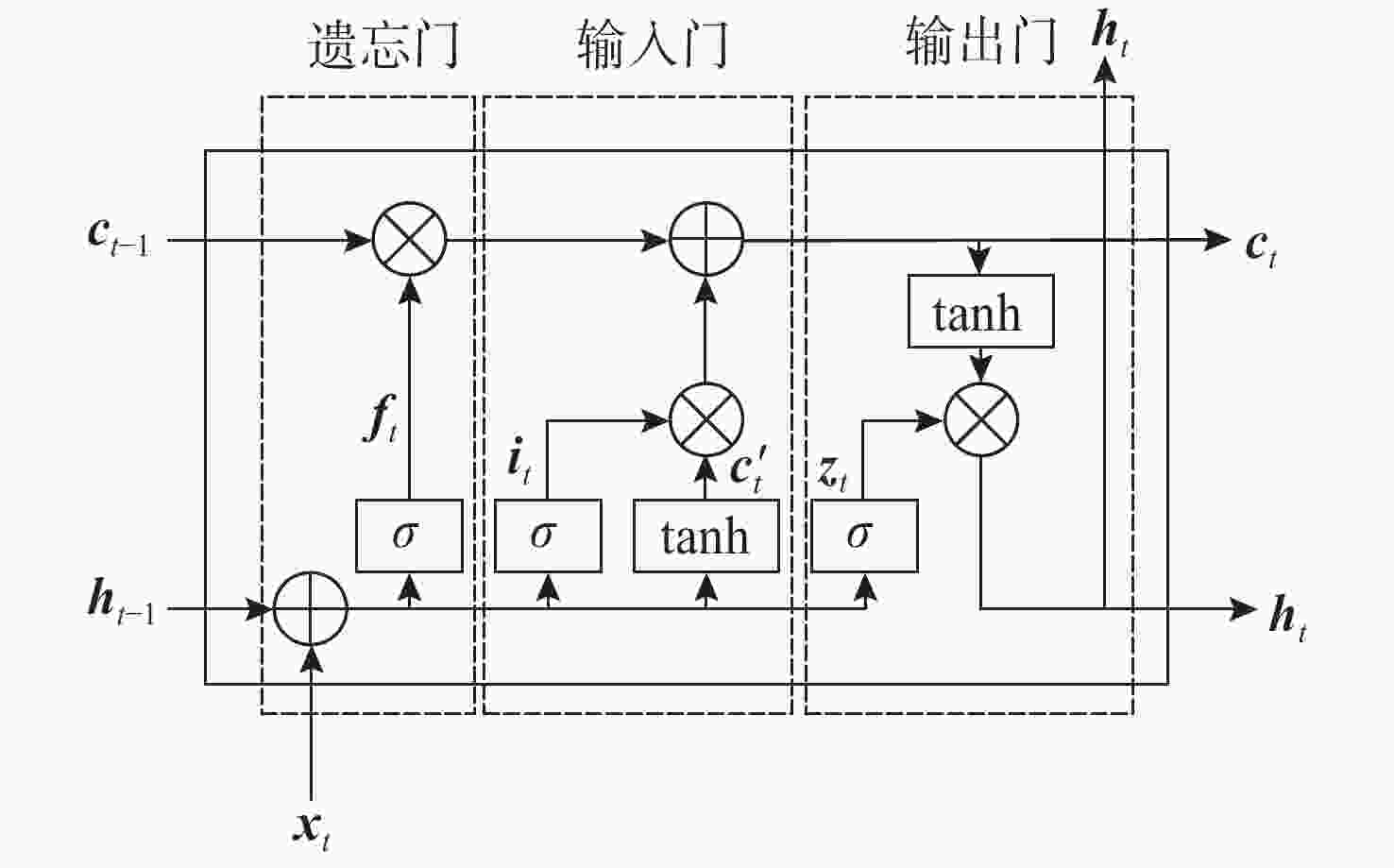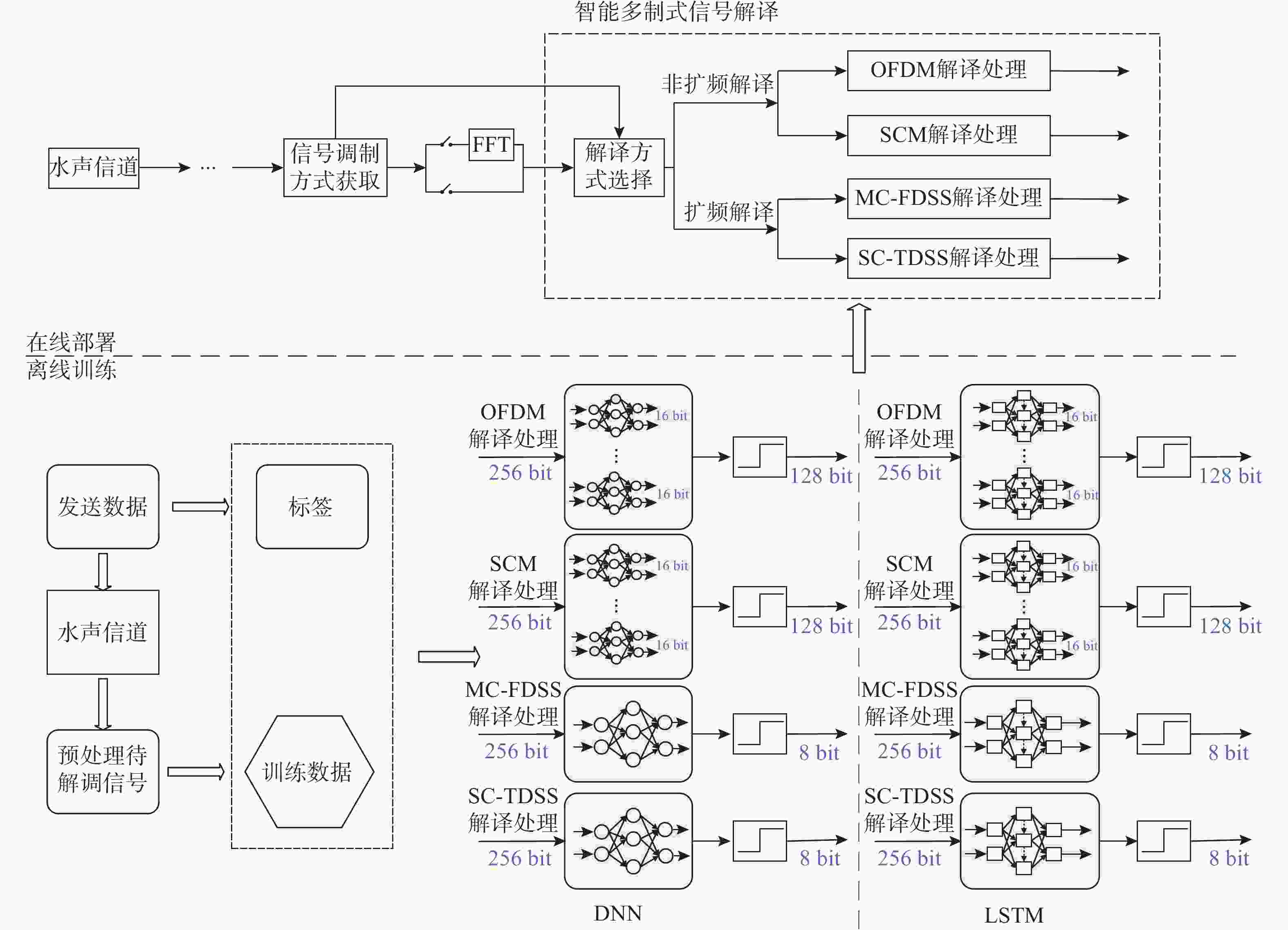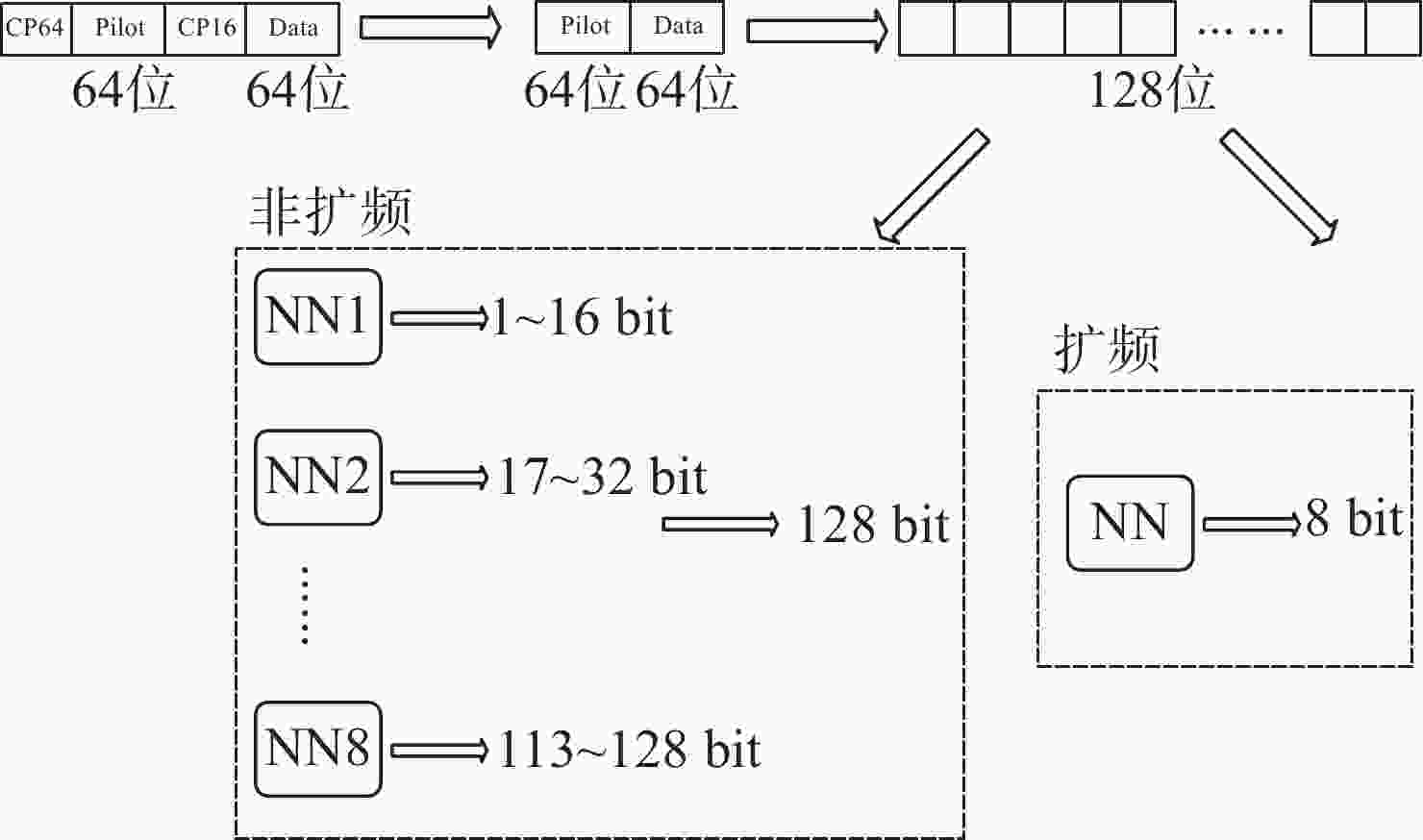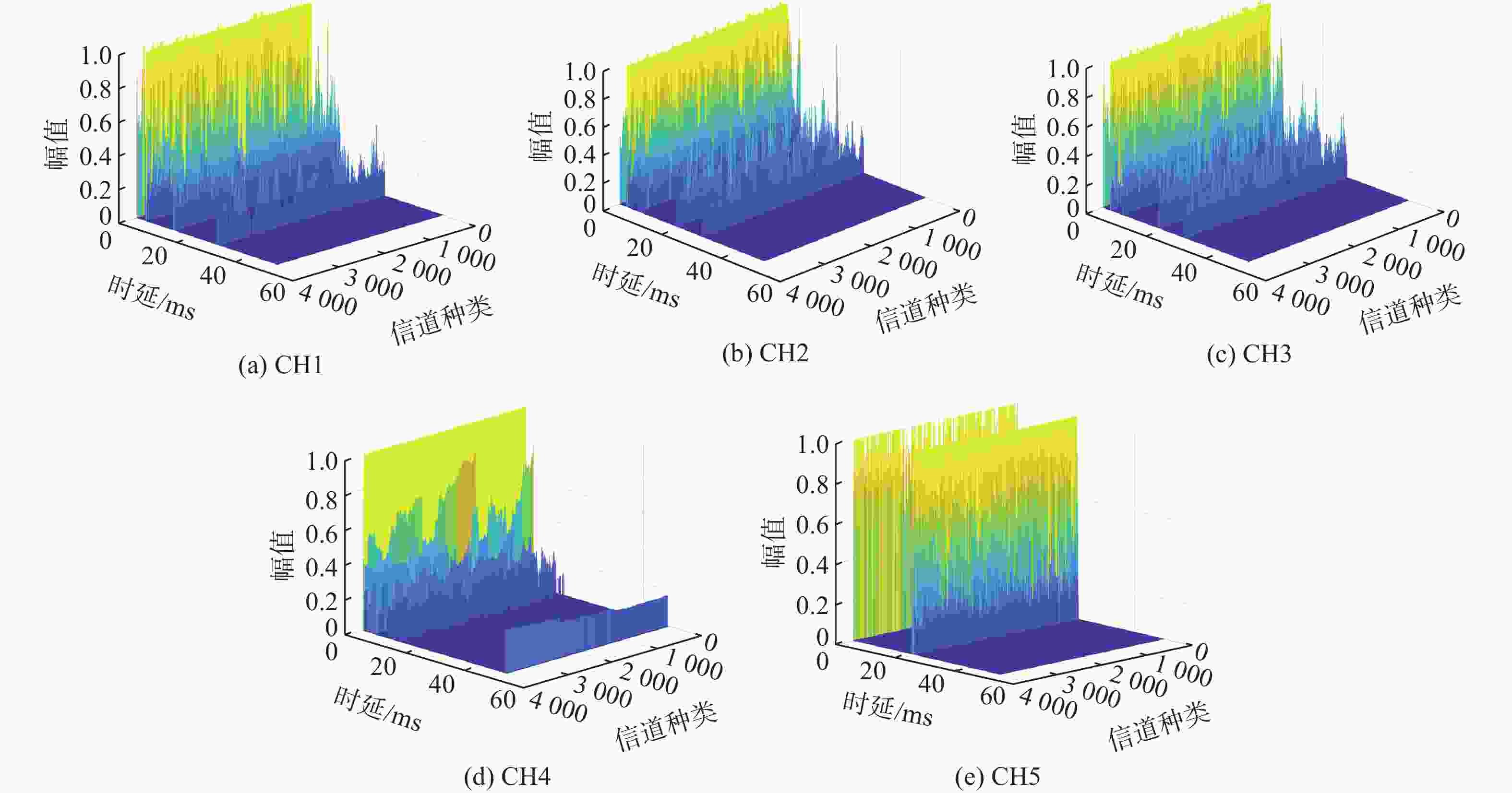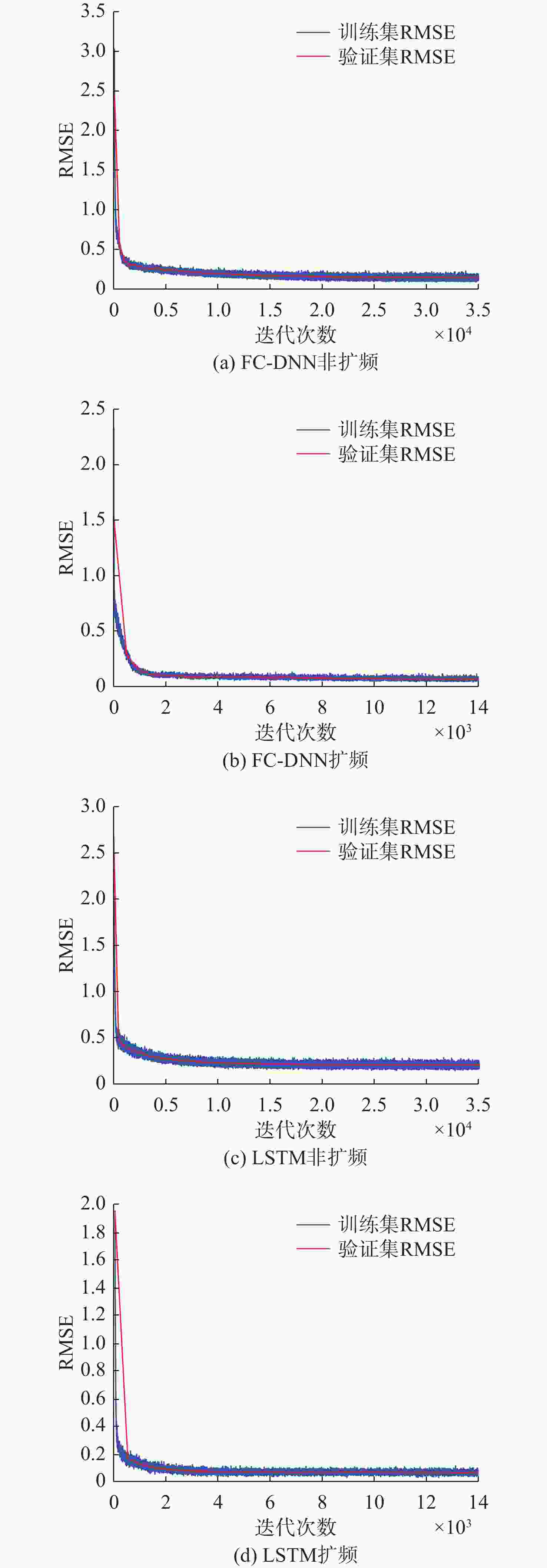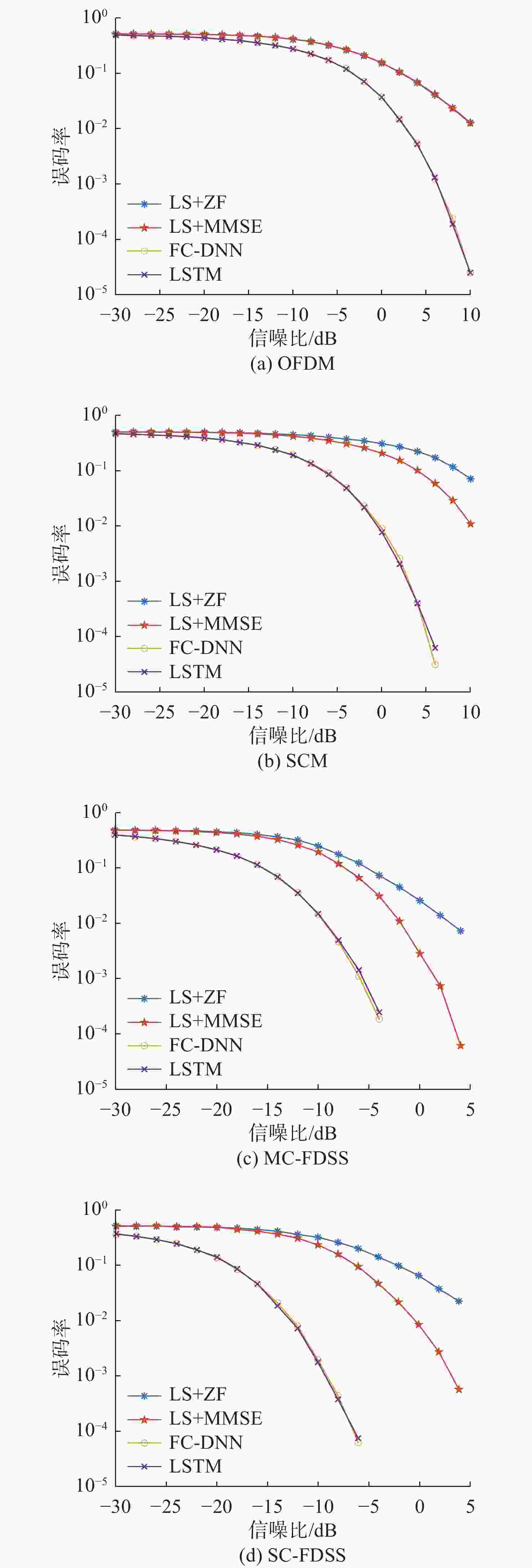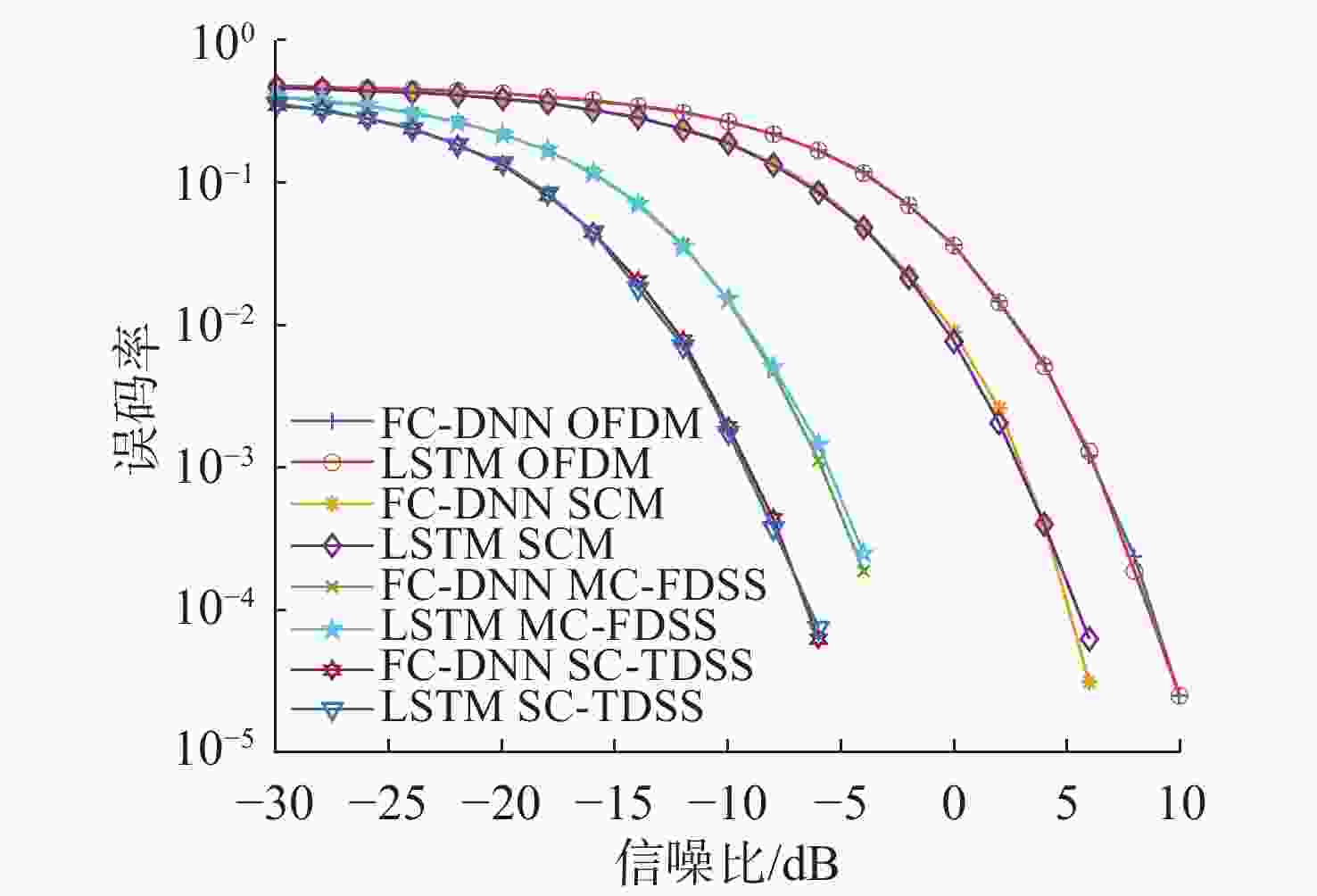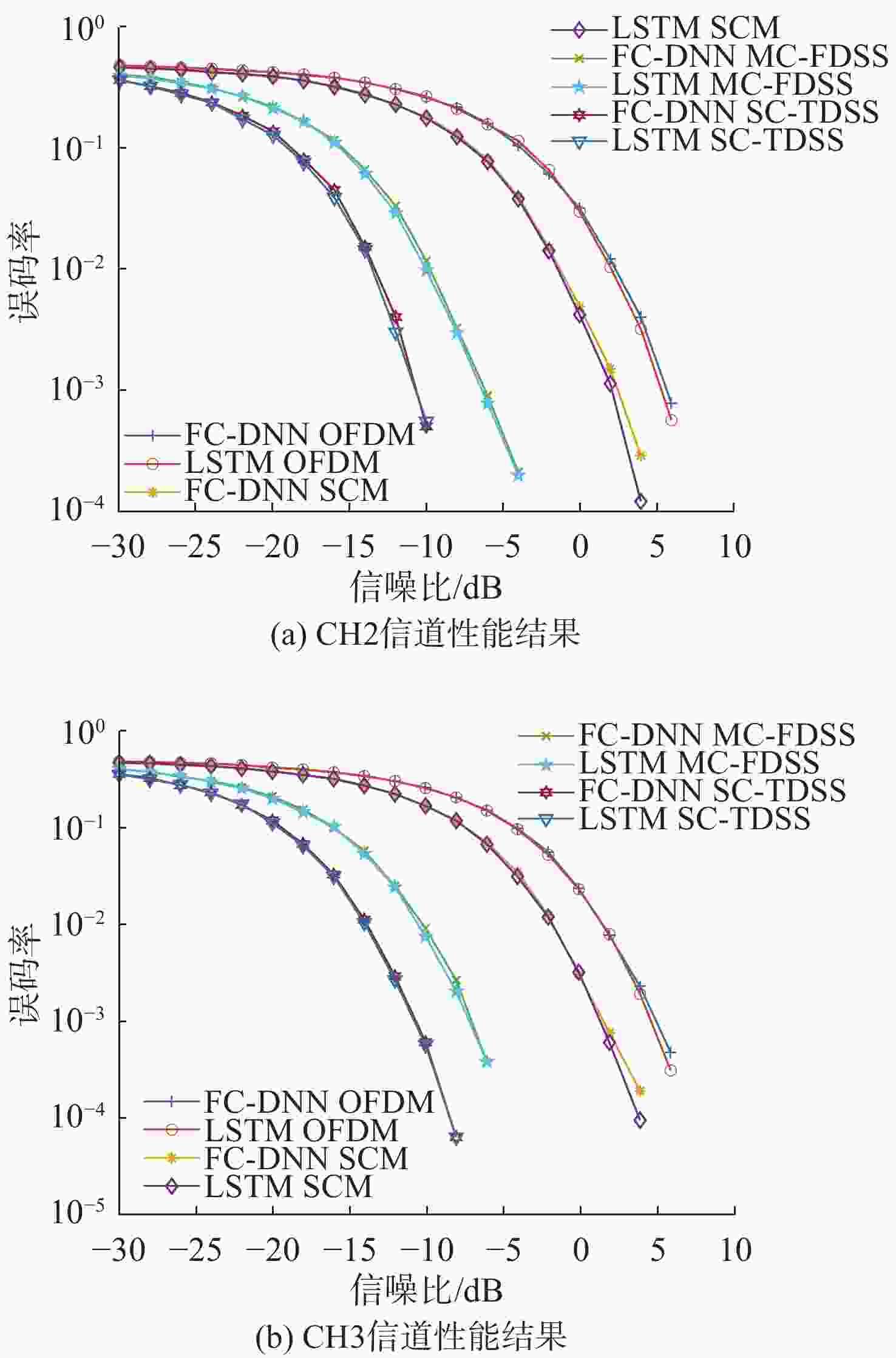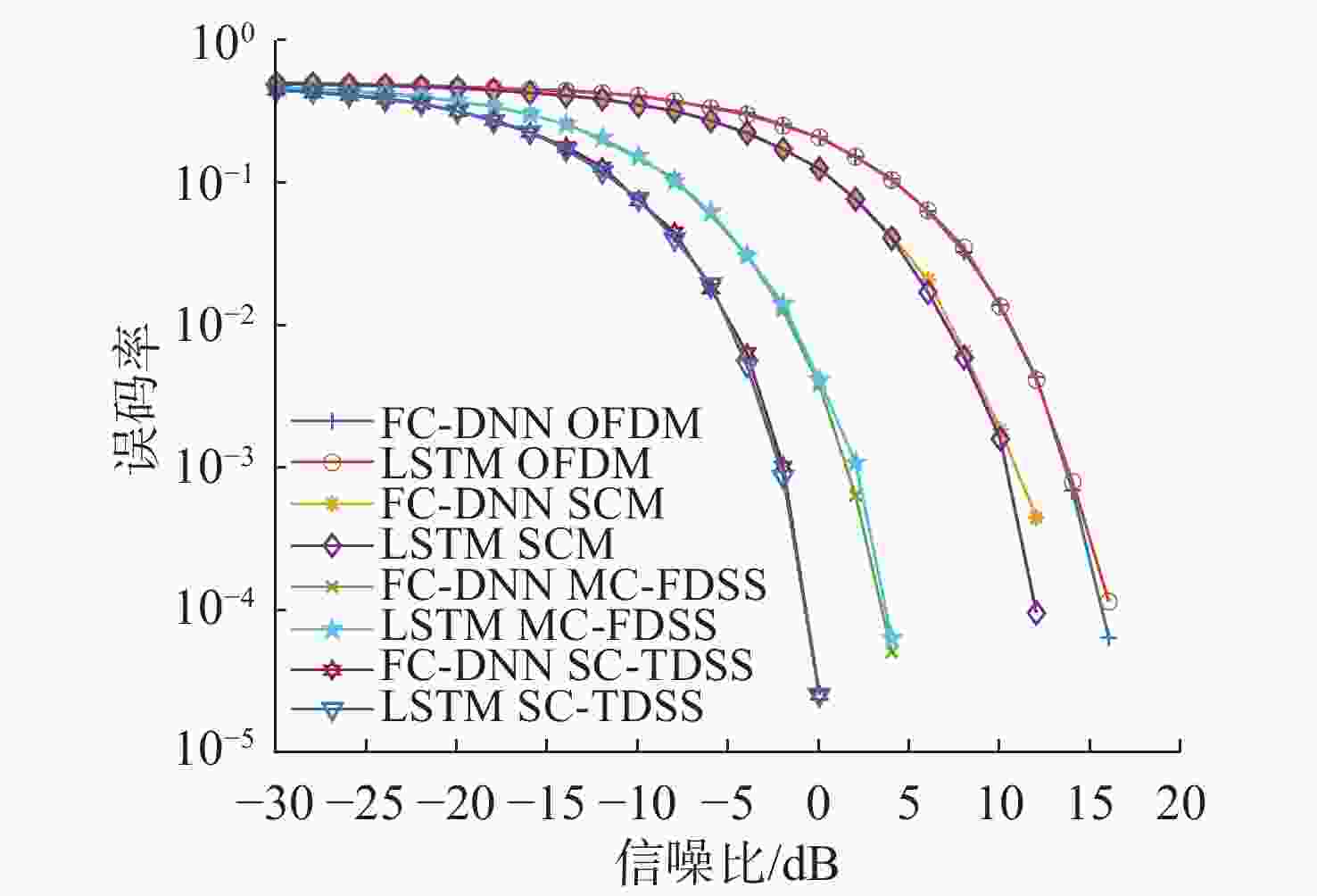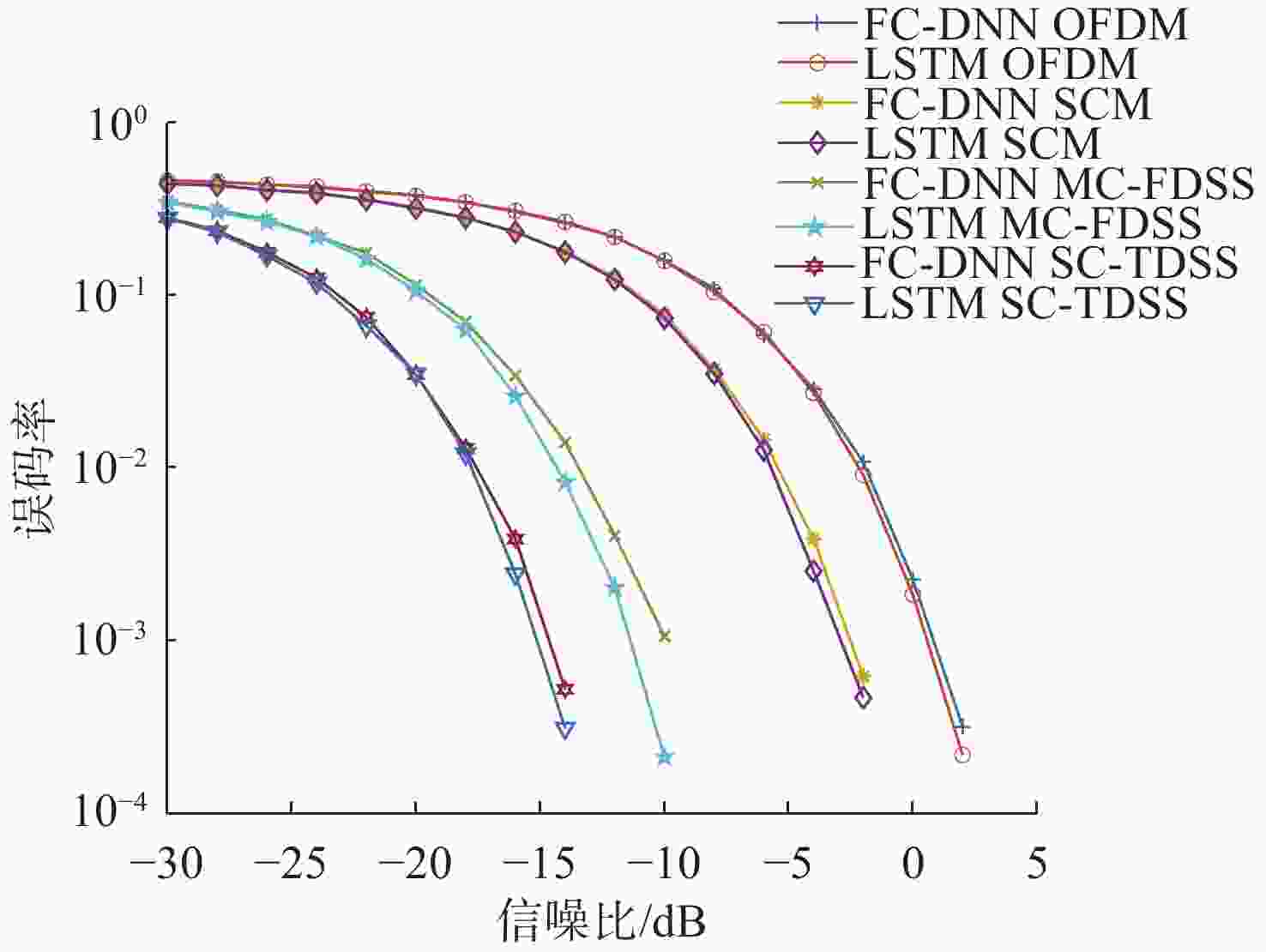Design of Intelligent Interpretation Network for Underwater Acoustic Communication Receiver with Multiple Signal Modulations
-
摘要: 针对复杂应用场景的信道自适应高质量水声通信需求, 提出了一种支持正交频分复用(OFDM)、单载波调制(SCM)、多载波频域扩频(MC-FDSS)和单载波时域扩频(SC-TDSS) 等4种信号调制方式的多制式水声通信接收机智能解译网络设计方案, 分别采用基于全连接深度神经网络(FC-DNN)和长短期记忆(LSTM)网络的智能解译模块代替传统的信道估计和信道均衡模块, 针对非扩频和扩频信号调制方式设计了易于并行扩展的深度学习网络结构。基于5种典型时变信道模型进行了网络训练和测试, 测试结果表明, 设计的2种智能解译网络相较于传统的最小二乘(LS)估计+迫零均衡、LS估计+最小均方误差信道估计均衡方法, 系统性能均有较大提升。在信噪比5 dB条件下, OFDM和SCM非扩频信号调制方式的系统误码率分别降低了约10倍和100倍; 信噪比−5 dB条件下, MC-FDSS和SC-TDSS扩频信号调制方式的系统误码率分别降低了约100倍和1 000倍; 设计的2种智能解译网络的系统性能相当, 均具有良好的泛化性能, 基于FC-DNN的智能解译网络的计算复杂度较低。Abstract: An intelligent interpretation network design scheme for underwater acoustic communication receivers with multiple signal modulations was proposed to meet the requirements of channel adaptive underwater acoustic high-quality communication in complex application scenarios. It supported four signal modulation methods including orthogonal frequency division multiplexing(OFDM), single carrier modulation(SCM), multi carrier frequency domain spread spectrum(MC-FDSS), and single carrier with time domain spread spectrum(SC-TDSS). Intelligent interpretation modules based on fully-connected deep neural network(FC-DNN) and long short-term memory(LSTM) networks were used to replace traditional channel estimation and channel equalization modules. A deep learning network structure that facilitated parallel expansion was designed for non-spread spectrum and spread spectrum signal modulation methods. Network training and testing were conducted based on five typical time-varying channel models. The test results show that the two designed intelligent interpretation networks have significantly improved system performance compared to traditional least squares(LS) estimation + zero-forcing(ZF) equalization and LS estimation + minimum mean squared error(MMSE) channel estimation equalization methods. Under a signal-to-noise ratio of 5 dB, the system error rates of OFDM and SCM non-spread spectrum signal modulation methods are reduced by about 10 times and 100 times, respectively. Under a signal-to-noise ratio of −5 dB, the system error rates of MC-FDSS and SC-TDSS spread spectrum signal modulation methods are reduced by about 100 times and 1 000 times, respectively. The system performance of the two designed intelligent interpretation networks is comparable, and they both have good generalization performance. The computational complexity of the intelligent interpretation network based on FC-DNN is relatively low.
-
表 1 水声通信系统参数
Table 1. Parameters of underwater acoustic communication system
参数名称 OFDM SCM MC-FDSS SC-TDSS 数字调制 QPSK QPSK QPSK QPSK 频域导频数 56 — 56 — 子载波数 64 1 64 1 扩频码长度 — — 16 16 通信速率/(kbit/s) 39.36 4.92 2.46 0.31 带宽/kHz 21~27 21~27 21~27 21~27 采样频率/kHz 96 96 96 96 表 2 非扩频信号FC-DNN网络结构
Table 2. FC-DNN network structure for none spread spectrum signals
类型 激活函数 神经元个数 输入层 — 256 隐藏层1 ReLU 500 隐藏层2 ReLU 250 隐藏层3 ReLU 120 输出层 sigmoid 16 表 3 扩频信号FC-DNN网络结构
Table 3. FC-DNN network structure for spread spectrum signals
类型 激活函数 神经元个数 输入层 — 256 隐藏层1 ReLU 500 隐藏层2 ReLU 250 输出层 sigmoid 8 表 4 LSTM网络结构
Table 4. LSTM network architecture
类型 激活函数 神经元个数 输入层 — 256 LSTM层1 tanh / sigmoid 128 LSTM层2 tanh / sigmoid 64 输出层 sigmoid 16(非扩频)/
8(扩频)表 5 水声信道模型参数
Table 5. Underwater acoustic channel model parameters
信道 H/m D/m 位置 最大时延/ms CH1 100 1 000 Ⅰ 30 CH2 100 1 000 Ⅱ 28 CH3 100 1 000 Ⅲ 28 CH4 100 5 000 Ⅱ 48 CH5 500 1 000 Ⅱ 21 表 6 神经网络训练参数
Table 6. Training parameters for neural networks
参数 设置 训练信噪比/dB 25 测试信噪比/dB −30~10 优化算法 Adam 训练数据集 CH1信道每种调制35 000帧 验证数据集 CH1信道每种调制15 000帧 测试数据集 5种信道每种信噪比2 000帧 验证集评估频率 500 训练最大轮数 50(非扩频)/20(扩频) 每轮迭代次数 700 学习率 初始0.001, 两轮后0.000 8 L2正则化 0.002 表 7 软硬件环境
Table 7. Software and hardware environment
配置项目 参数 CPU 12th Gen Intel(R) Core(TM) i7-12700 内存 32 GB GPU NVIDIA Geforce RTX 4060Ti 显存 24 GB 仿真软件 MATLAB 2022b 表 8 网络复杂度
Table 8. Complexity of neural networks
神经网络类型 参数量 存储/MB FLOPS FC-DNN非扩频 2.29×106 8.52 9.12×106 FC-DNN扩频 0.26×106 0.97 1.02×106 LSTM非扩频 1.98×106 7.46 2.20×107 LSTM扩频 0.25×106 0.93 3.64×106 -
[1] 朱敏, 武岩波. 水声通信技术进展[J]. 中国科学院院刊, 2019, 34(3): 289-296.ZHU M, WU Y B. Development of underwater acoustic communication technology[J]. Bulletin of Chinese Academy of Sciences, 2019, 34(3): 289-296. [2] LIU L, SUN D, ZHANG Y. A family of sparse group lasso RLS algorithms with adaptive regularization parameters for adaptive decision feedback equalizer in the underwater acoustic communication system[J]. Physical Communication, 2017, 23: 114-124. doi: 10.1016/j.phycom.2017.03.005 [3] LI B, YANG H, LIU G, et al. A new joint channel equalization and estimation algorithm for underwater acoustic channels[J]. Eurasip Journal on Wireless Communications and Networking, 2017, 169: 1-6. [4] PRANITHA B, ANJANEYULU L. Analysis of underwater acoustic communication system using equalization technique for ISI reduction[J]. Procedia Computer Science, 2020, 167: 1128-1138. doi: 10.1016/j.procs.2020.03.415 [5] YE H, LI G Y, JUANG B H. Power of deep learning for channel estimation and signal detection in OFDM systems[J]. IEEE Wireless Communications Letters, 2017, 7(1): 114-117. [6] 朱雨男, 王彪, 张岑. 基于深度神经网络的水声FBMC通信信号检测方法[J]. 声学技术, 2021, 40(2): 199-204.ZHU Y N, WANG B, ZHANG C. DNN based signal detection for underwater acoustic FBMC communications[J]. Technical Acoustics, 2021, 40(2): 199-204. [7] ZHANG Y, LI J, ZAKHAROV Y, et al. Underwater acoustic OFDM communications using deep learning[C]//The 2nd Franco-Chinese Acoustic Conference(FCAC). Le Mans, France: Le Mans Université, 2018. [8] JIANG R, WANG X, CAO S, et al. Deep neural networks for channel estimation in underwater acoustic OFDM systems[J]. IEEE Access, 2019, 7: 23579-94. doi: 10.1109/ACCESS.2019.2899990 [9] ZHANG J, CAO Y, HAN G, et al. Deep neural network-based underwater OFDM receiver[J]. IET Communications, 2019, 13(13): 1998-2002. doi: 10.1049/iet-com.2019.0243 [10] ZHOU M, WANG J, SUN H, et al. A novel DNN based channel estimator for underwater acoustic communications with IM-OFDM[C]//IEEE International Conference on Signal Processing, Communications and Computing (ICSPCC). Macau, China: IEEE, 2020: 1-6. [11] HASSAN S, CHEN P, RONG Y, et al. Underwater acoustic OFDM receiver using a regression-based deep neural network[C]//OCEANS 2022. Hampton Roads, VA, USA: IEEE, 2022: 1-6. [12] WANG Z, LIU L, CHENG Z, et al. Intelligent receiver design for underwater acoustic OFDM communication based on LSTM networks[C]//IEEE International Conference on Signal Processing, Communications and Computing(ICSPCC). Zhengzhou, China: IEEE, 2023: 1-6. [13] HASSAN S, CHEN P, RONG Y, et al. Doppler shift compensation using an LSTM-Based deep neural network in underwater acoustic communication systems[C]//OCEANS 2023. Limerick, Ireland: IEEE, 2023: 1-7. [14] ZHANG Y, LI C, WANG H, et al. Deep learning aided OFDM receiver for underwater acoustic communications[J]. Applied Acoustics, 2022, 187: 108515. doi: 10.1016/j.apacoust.2021.108515 [15] OUYANG D, LI Y, WANG Z. Channel estimation for underwater acoustic OFDM communications: An image super-resolution approach[C]//ICC 2021-IEEE International Conference on Communications. Online: IEEE, 2021: 1-6. [16] RUMELHART D E, HINTON G E, WILLIAMS R J. Learning representations by back-propagating errors[J]. Nature, 1986, 323(6088): 533-536. doi: 10.1038/323533a0 [17] HOCHREITER S. Long short-term memory[J]. Neural Computation, 1997, 9(8): 1735-80. doi: 10.1162/neco.1997.9.8.1735 [18] QARABAQI P, STOJANOVIC M. Statistical characterization and computationally efficient modeling of a class of underwater acoustic communication channels[J]. IEEE Journal of Oceanic Engineering, 2013, 38(4): 701-717. doi: 10.1109/JOE.2013.2278787 -





 下载:
下载:
